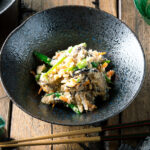
Okara (Unohana)
Okara (Unohana) is a popular Japanese home-style simmered dish made of assorted vegetables, shiitake mushroom, hijiki seaweed, and soy pulp. It can be a tasty and satisfying vegan dish, thanks to the protein-packed okara (soy pulp).
Servings: 4
Calories: 192kcal
Ingredients
- ½ lb okara (raw; read more in the blog post)
- 4 dried shiitake mushrooms (0.85 oz, 24 g)
- ½ cup water
- 1 carrot (3 oz, 90 g)
- 1 piece aburaage (deep-fried tofu pouch) (0.7 oz, 20 g)
- 2 tsp dried hijiki seaweed (2 g)
- ½ block konnyaku (konjac) (4.5 oz, 128 g)
- 3 oz French green beans (haricots verts)
- 1½ Tbsp toasted sesame oil
For the Seasonings
- ⅔ cup dashi (Japanese soup stock) (use standard Awase Dashi, dashi packet or powder, or Vegan Dashi)
- 2 Tbsp mirin (I use Takara Mirin)
- 1 Tbsp sake (I use Sho Chiku Baii Classic Junmai)
- 2 Tbsp usukuchi (light-colored) soy sauce (you can use regular soy sauce, but the final dish will look darker)
- 2 Tbsp sugar
- ½ tsp Diamond Crystal kosher salt
Instructions
- Gather all the ingredients.
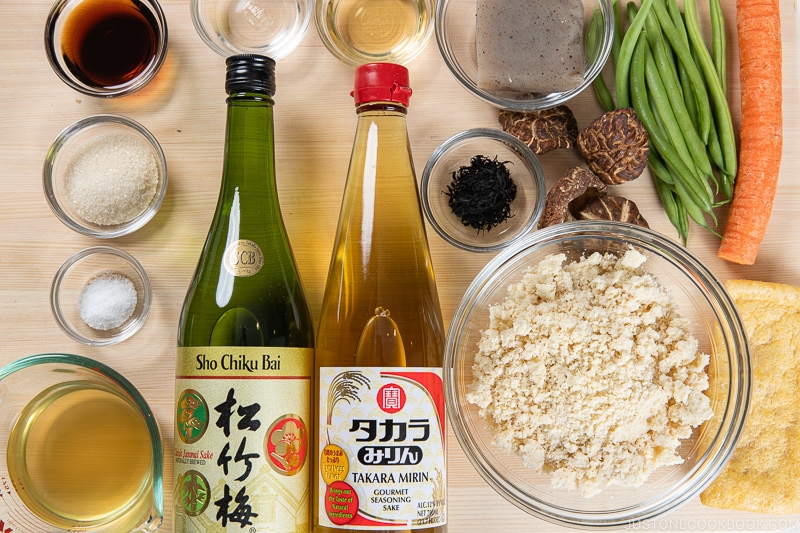
To Prepare the Ingredients
- Soak 4 dried shiitake mushrooms in ½ cup water (I use a 2-cup measuring cup). Place a heavy object (I use a small bowl) over the mushrooms to submerge them completely. Set aside to rehydrate.
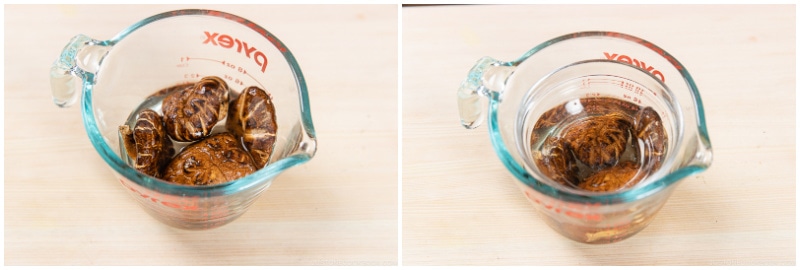
- In a small bowl, combine 2 tsp dried hijiki seaweed and 4 Tbsp water. Set aside to rehydrate.
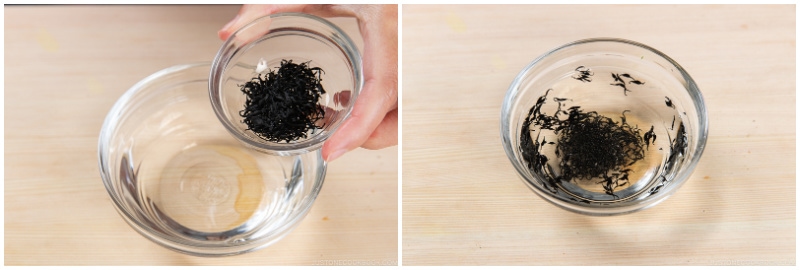
- Cut ½ block konnyaku (konjac) into ¼-inch (6-mm) slices, about the width of a pencil. Then, cut the slices in half widthwise.
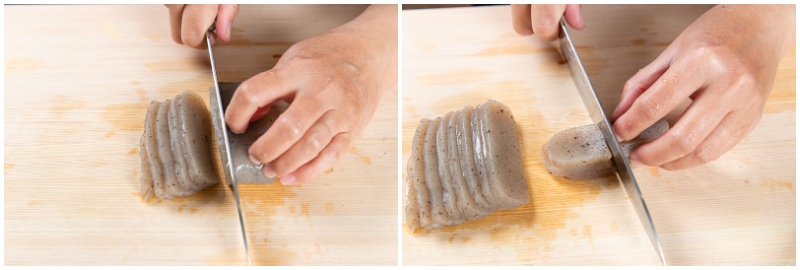
- Finally, cut the pieces into thin ¼-inch (6-mm) strips.
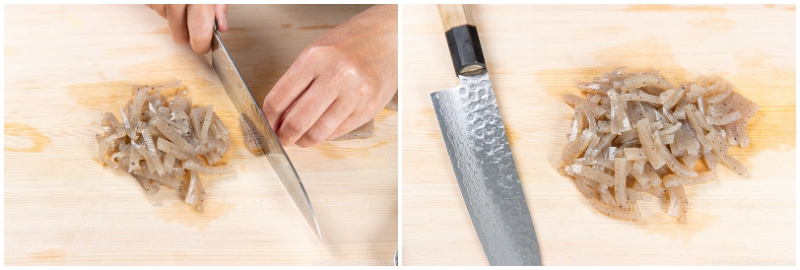
- Bring a medium pot of water to a boil. Meanwhile, snap and trim the ends of 3 oz French green beans (haricots verts), if they haven’t been trimmed.
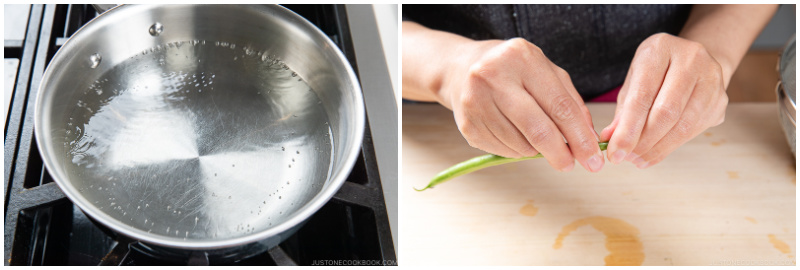
- When the water is boiling, add the green beans and blanch for 2 minutes. The remaining heat will continue to cook, so be careful not to overcook. Drain and transfer them to a plate/tray.
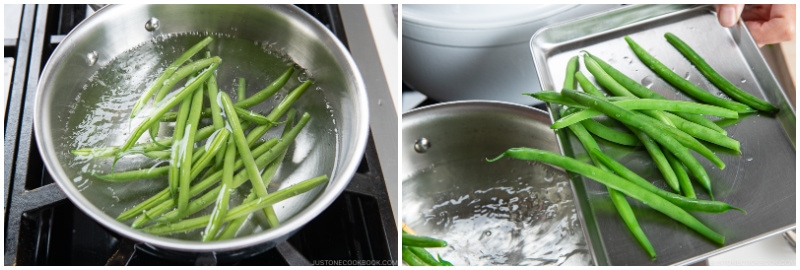
- In the same boiling water, add 1 piece aburaage (deep-fried tofu pouch) and blanch for 10 seconds on each side, flipping once. Transfer to the plate/tray.
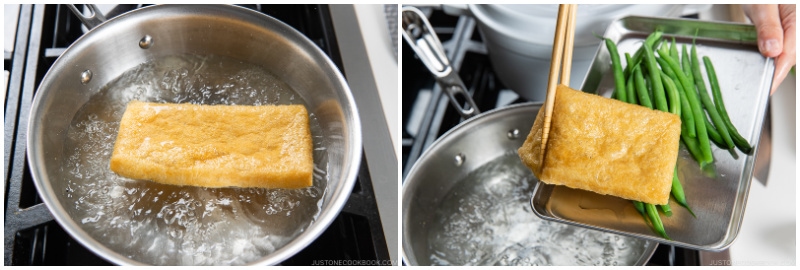
- In the same boiling water, add the konnyaku. Cook for 2–3 minutes to remove the astringency. Drain and transfer it to the plate/tray and set aside. Rinse the pot quickly (you will use this pot again later).
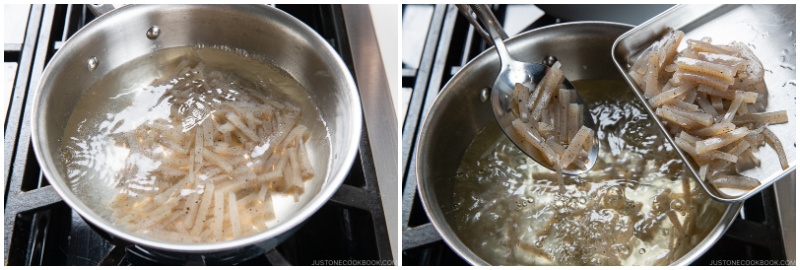
- When the aburaage is cool enough to handle, cut it in half lengthwise, then cut it into thin strips (similar to the size and shape of the konnyaku strips).
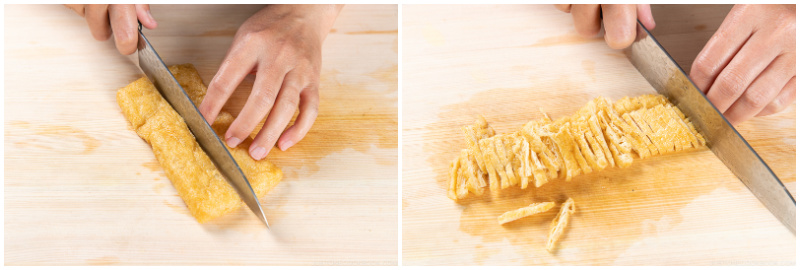
- Peel and cut 1 carrot into 2-inch (5-cm) pieces. Then cut it into thin slabs.
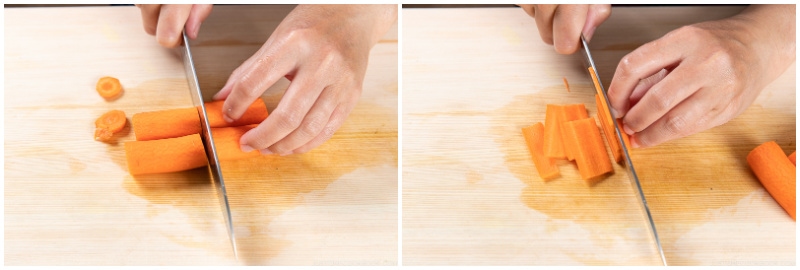
- Then, cut the slab into thin strips (similar to the konnyaku and aburaage).
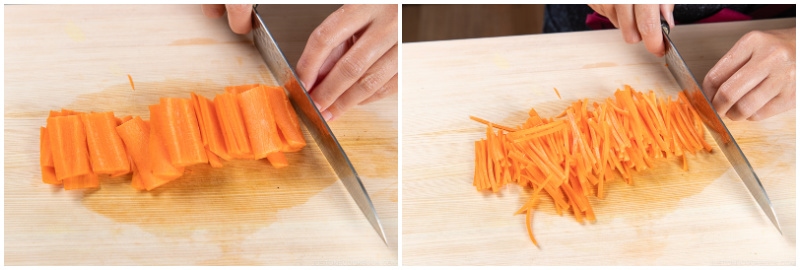
- Cut the green beans diagonally so the strips will be the same size as other vegetables.
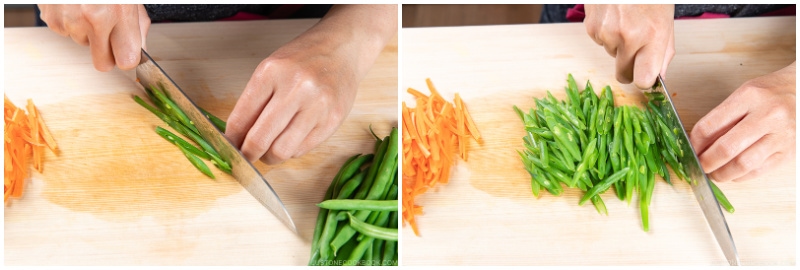
- By this time, the hijiki seaweed should be rehydrated. Drain well and set aside.
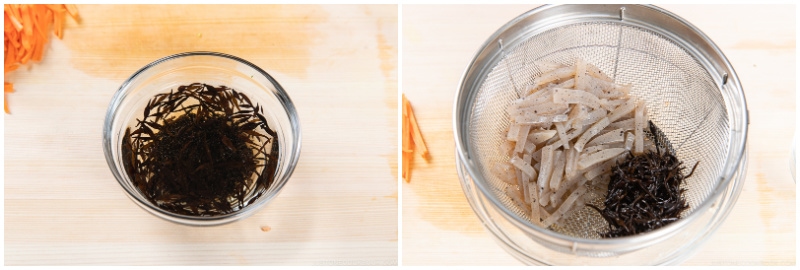
- In the same medium pot, add ½ lb okara (no need to add oil) and stir-fry on medium-low heat for 5–6 minutes.
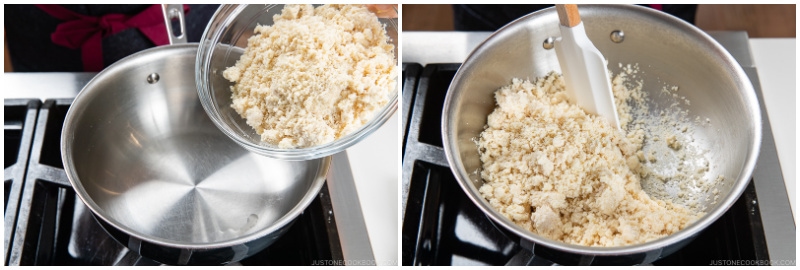
- The okara may stick to the pot (especially if you’re using stainless steel like mine) but don’t worry. I usually use a silicone spatula to scrape it off. When the okara is dry and crumbly, remove it from the heat and set aside.
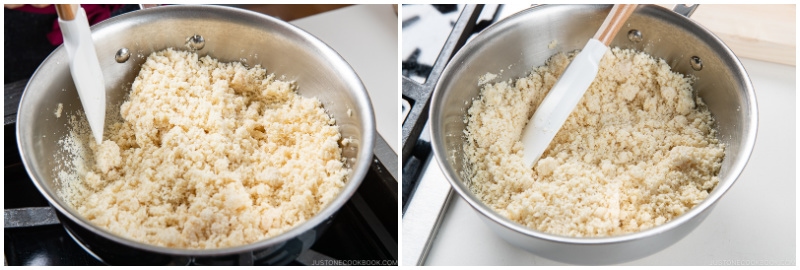
- By this time, the dried shiitake mushrooms should be rehydrated and soft. Squeeze the liquid from the mushrooms. Reserve the soaking liquid (shiitake dashi) in a measuring cup. We’ll be using the liquid in the next step. Discard the tough stem of the mushrooms and thinly slice the caps.
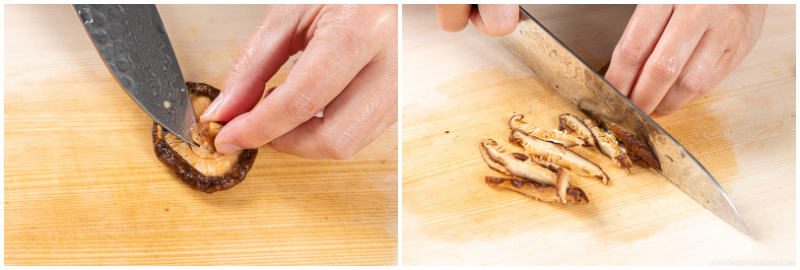
- You should have about ⅓ cup shiitake dashi (the soaking liquid). We will combine this shiitake dashi with the ⅔ cup dashi (Japanese soup stock) prepared in advance. Altogether, you will have 1 cup of dashi. Shiitake dashi may contain some debris, so I recommend straining it over the measuring cup to catch any impurities.
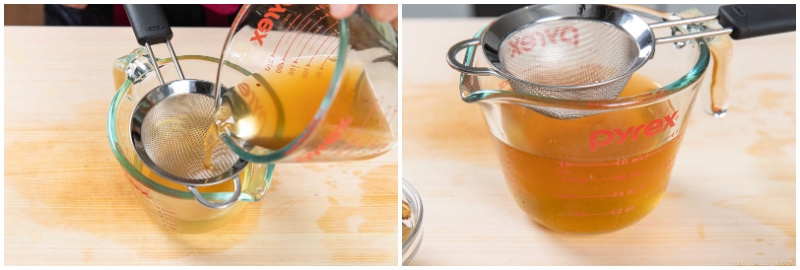
To Cook the Okara (Unohana)
- In a medium pot, heat 1½ Tbsp toasted sesame oil on medium heat. When it’s hot, add the carrot and coat it with the oil.
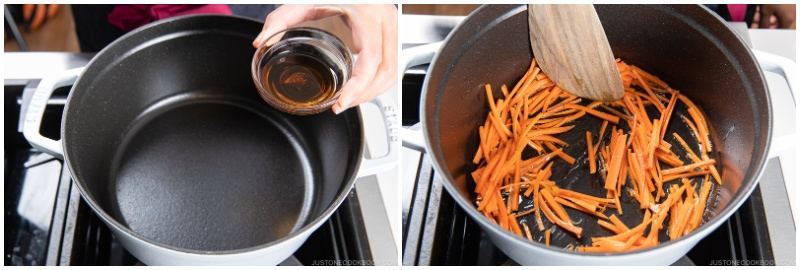
- Then add the shiitake mushrooms, aburaage, konnyaku, and hijiki seaweed.
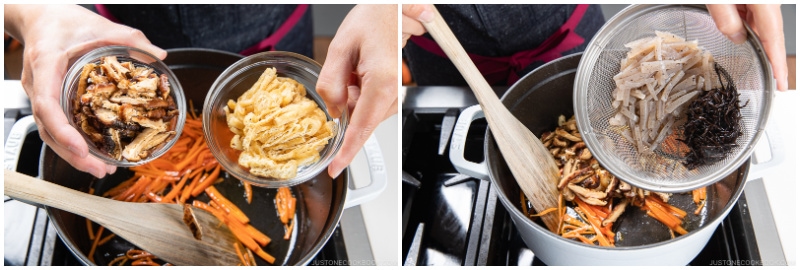
- Stir-fry together for 1–2 minutes. Then, add the 1 cup of combined dashi.
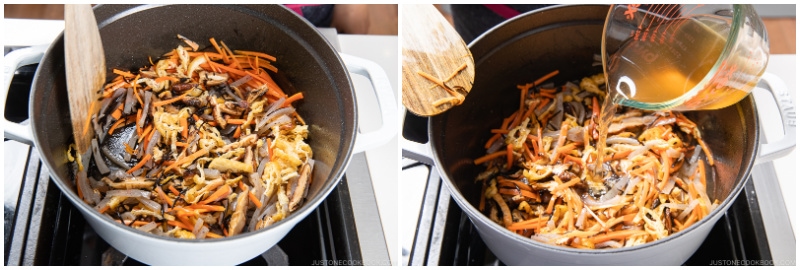
- Add 2 Tbsp mirin, 1 Tbsp sake, 2 Tbsp usukuchi (light-colored) soy sauce (use light-color soy sauce if possible), and 2 Tbsp sugar.
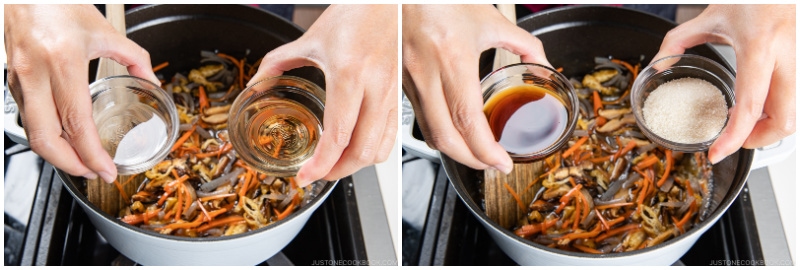
- Mix all together, reduce the heat to medium low, and cover to cook for 4–5 minutes. We cook it covered so the cooking liquid does not evaporate.
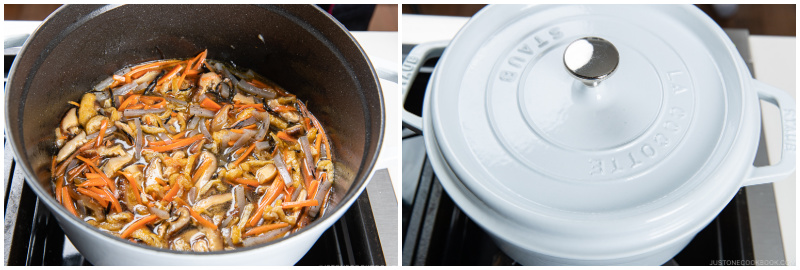
- Open the lid and add the okara.
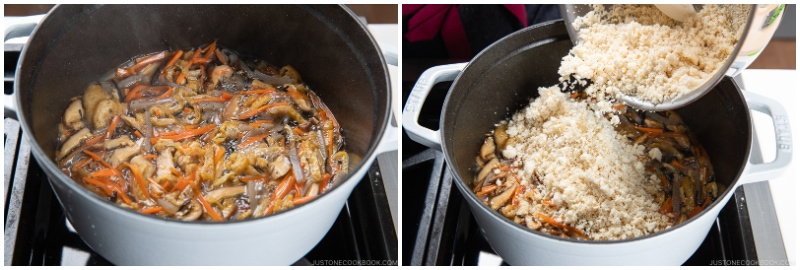
- Stir to combine the okara with the other ingredients. The okara will quickly absorb all the moisture. Keep stirring and cook on medium-low heat for 4–5 minutes.
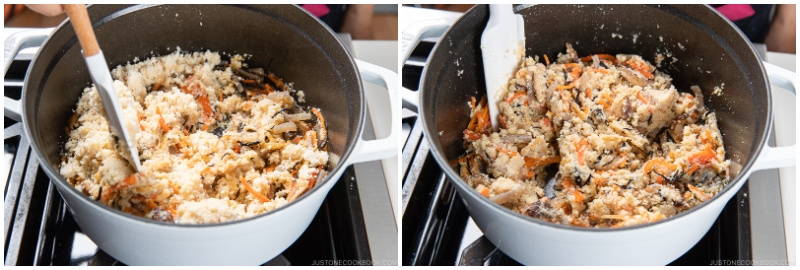
- Add ½ tsp Diamond Crystal kosher salt and check the flavor. If not strong enough, add a bit more salt.
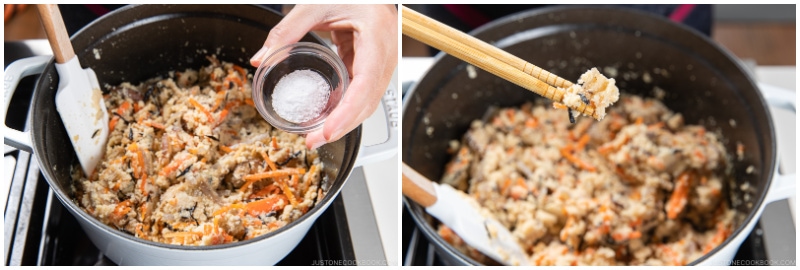
- Continue to cook until the liquid on the bottom of the pot is completely evaporated. Add the green beans and cook for 1–2 minutes before finishing.
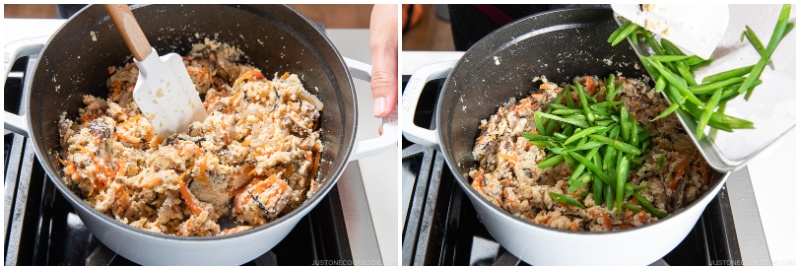
- Quickly mix all together and don’t overcook. Serve warm, chilled, or at room temperature.
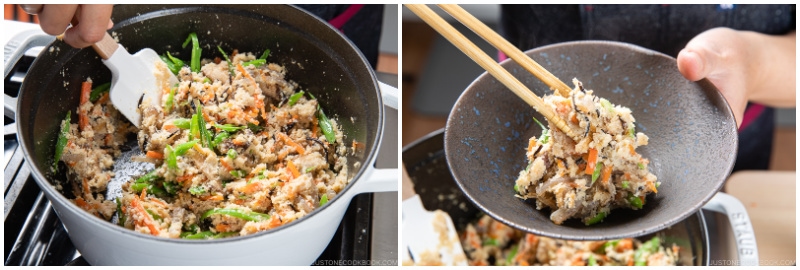
To Store
- You can keep the leftovers in an airtight container and store them in the refrigerator for 3 days or in the freezer for a month.
Nutrition
Calories: 192 kcal · Carbohydrates: 26 g · Protein: 5 g · Fat: 6 g · Saturated Fat: 1 g · Polyunsaturated Fat: 3 g · Monounsaturated Fat: 2 g · Sodium: 584 mg · Potassium: 331 mg · Fiber: 2 g · Sugar: 11 g · Vitamin A: 3702 IU · Vitamin C: 5 mg · Calcium: 79 mg · Iron: 1 mg